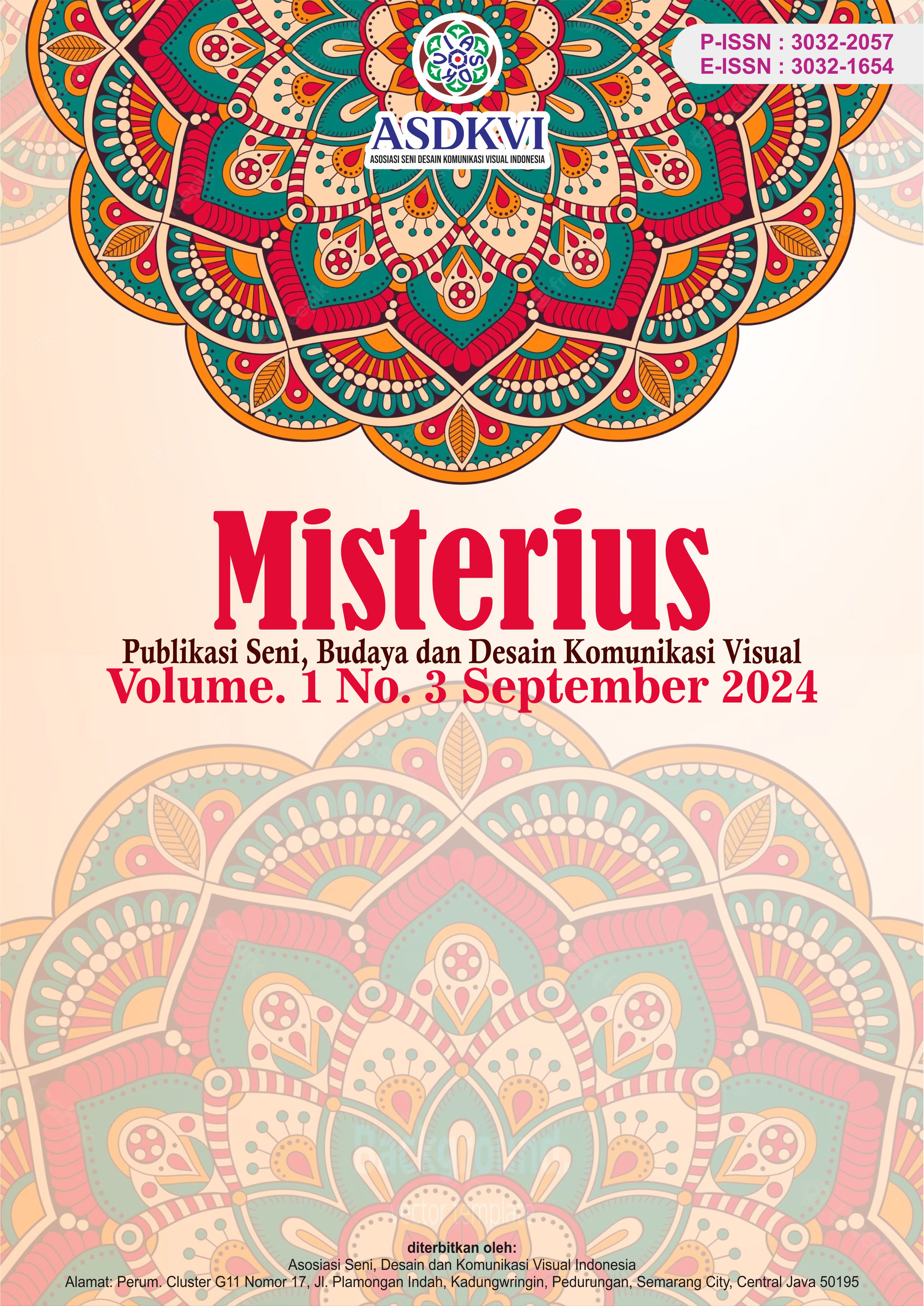Kebertahanan dan Keberlanjutan Tari Pisau Dua dalam Masyarkat yang Berubah di Desa Tanjung Eran Kecamatan Pino
DOI:
https://doi.org/10.62383/misterius.v1i3.241Keywords:
Survival and Sustainability of the Dua Dua DanceAbstract
This study aims to describe and analyze the survival and sustainability of the Dua Dua Dance in the community in Tanjung Eran Village. This type of research is qualitative research with a descriptive method. The main instrument of this research is the researcher and is assisted by supporting instruments such as stationery and cameras. Data were collected through literature studies, observations, interviews and documentation. The steps of analyzing data are data collection, data reduction, data modeling, and drawing conclusions. The results of the study show that the survival and sustainability of the Knife Dance in Tanjung Eran Village, Pino District is still ongoing to this day through the Elan Sakti College taught by Datuk Ardin. The survival of the Dua Dua Dance can be seen in terms of the form of movement, costumes and rituals that have not changed from the past to the present. The ritual is to prepare offerings containing (black chicken/beetle chicken and brown rice), then prepare a complete betel nut containing (lime, betel, areca nut), prepare a basket of rice filled (rice, lime, white thread, needles, glasses filled with salt chili) and a bowl of Situngkat Guru White Cloth 1 piece per person and 3 colors of yarn (yellow, black, white). The offerings that were prepared were used before becoming a member and after mastering the Pisau Dua dance is still carried out without any change at all. In terms of performing the Pisau Dua dance at an event, there is a procedure carried out by the dancer, namely bathing using lime. It is this resilience that makes sustainability in people's lives so that the Pisau Dua dance can be used in traditional ceremonies such as marriage ceremonies.
References
Indrayuda, I. (2001). Pendekatan Antropologi dalam Pembelajaran Sejarah dan Analisis Tari. Komposisi: Jurnal Pendidikan Bahasa Sastra dan Seni, 2(1), 97-110.
Indrayuda, I. (2008). Tari Balance Madam: Pada Masyarakat Nias Padang Sebuah Perspektif Etnologi (pp. 1-144). UNP Press.
Indrayuda. (2013). Tari Sebagai Budaya dan Pengetahuan. Padang: UNP Press.
Indriyanto, I. (2001). Pelabuhan Dan Masyarakat Surabaya 1900-1975.
Miles, M. B. (1992). Analisis Data Kualitatif. Jakarta: Universitas Indonesia.
Moleong, L. J. (2010). Metodologi Penelitian Kualitatif. Bandung: PT Remaja Rosdakarya.
Moleong, L. J. (2012). Metodologi Penelitian Kualitatif. Bandung: PT Remaja Rosdakarya.
Soedarsono. (1989). Seni Pertunjukan Jawa Tradisional dan Pariwisata Daerah Istimewa Yogyakarta. Yogyakarta: Departemen Pendidikan dan Kebudayaan.
Soedarsono. (1997). Tari-tarian Indonesia I. Jakarta: Depertemen Pendidikan dan Kebudayaan.
Soepandi, A. d. (1987). Ragam Cipta mengenal Seni Pertunjukan Daerah Jawa Barat. Bandung: CV Beringin Sakti.
Sumardjo, J. (2000). Filsafat Seni. Bandung: ITB.
Syafwan, N. A., & Indrayuda, I. (2022). Makna Tari Inai Dalam Prosesi Malam Berinai Pada Adat Perkawinan Masyarakat Desa Teluk Majelis Kecamatan Kuala Jambi. Jurnal Sendratasik, 11(3), 402-410.
Downloads
Published
How to Cite
Issue
Section
License
Copyright (c) 2024 Misterius : Publikasi Ilmu Seni dan Desain Komunikasi Visual.

This work is licensed under a Creative Commons Attribution-ShareAlike 4.0 International License.





